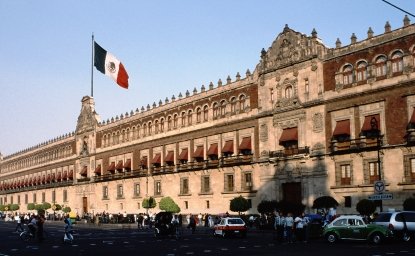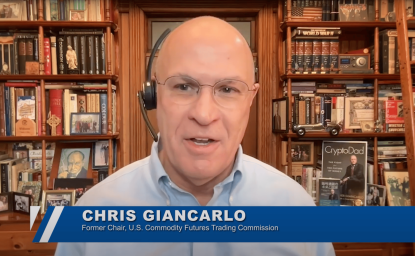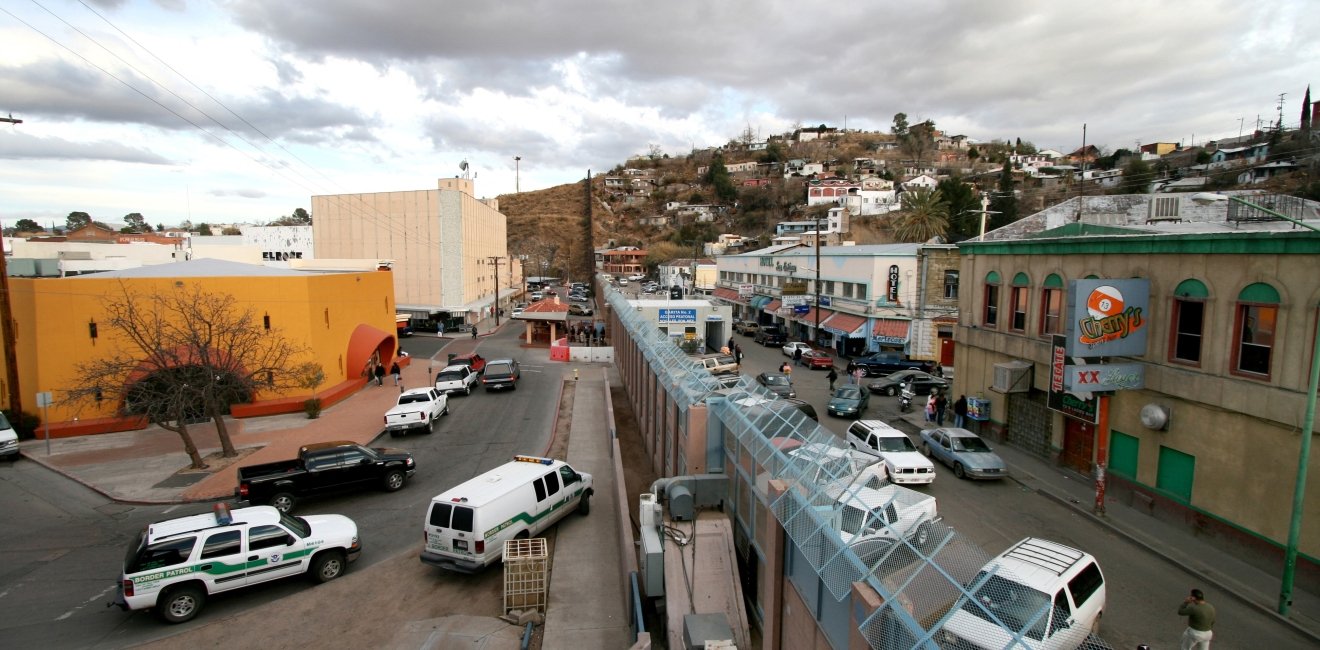Politics at the Limits of Mexico
On May 20, the Mexican presidential candidates will hold a debate in Tijuana, whose city motto Aquí empieza la patria (“The Nation Begins Here”) subtly pushes back against Mexico City’s centralization of power and policymaking.
While the border takes up huge amounts of bandwidth in U.S. politics, it also appears in Mexican politics as a potent symbol of Mexico’s place in the world. But in this election, it’s not all about Donald Trump, all the time. The border also plays a more practical—and highly controversial—role in terms of national tax policy given the enormous amount of crossborder commerce that takes place in the region.
The Candidates and the Border: A Focus on Pocketbook Issues
As the 2018 candidates campaign in the northern border states, they have tended to emphasize “pocketbook” issues more than others. From a practical political standpoint, this makes sense, as northerners have often felt that their tax money essentially heads to Mexico City to fund social programs in the deep Mexican South. Well aware of this, most candidates have put forth “border region friendly” proposals for addressing rising gasoline prices, high value added taxes and even irregularly imported “chocolate” used cars purchased in the United States.
In particular, Mexico’s federal value added tax (known by the Spanish acronym IVA, normally 16% in most of the country and applied to sales of a huge variety of items) is a story with an enormous political impact in the North. The 2015 midterm electoral disaster for the PRI of the 2015 midterm elections stemmed in part from the Peña Nieto administration’s rescinding the North’s preferential tax status (IVA had been held at 11% for decades in border communities). The (predictable) response from northerners ranged from stunned anger to calls for secession.
With this background in mind, the candidates’ current proposals for border state residents can be summed up as follows:
Andres Manuel López Obrador (MORENA), the front-runner, has also come down on the side of reducing rental taxes as well as the value added tax in the border zone in order to spur development in the region. This is an unusual proposal for a leftist candidate but smart politics in the border states for a career politician who has not done well in the North in previous elections.
Ricardo Anaya, candidate from Frente por México, a peculiar coalition between right (PAN) and left (PRD), has been more outspoken with respect to Trump in spite of the fact that his family lives in Atlanta. He has also insisted that he has always opposed raising the value added tax in the border region and that if elected he would work to lower it.
José Antonio Meade, candidate from the PRI, is s former Treasury Secretary in the Pena Nieto Administration, which may explain his reluctance to push for reducing taxes. He has promised to review the status of so-called irregularly imported “chocolate” cars, a back-to-basics PRI attempt at reaching lower- and middle-class voters in the North’s spread-out, automobile-dependent cities.
Jaime Rodríguez Calderón, alias “El Bronco,” also running as an independent candidate, has also promised to reduce the value added tax. He has also promised to move more funds to the municipal level and to create a fund that would specifically help border communities. He is the only candidate from a northern state (Nuevo León).
What’s Missing: NAFTA, Border Security, Infrastructure and the Environment
A number of high-profile issues that touch Mexico’s northern border region have been absent from the debate due to this emphasis on pocketbook issues.. NAFTA has been largely left out of candidates’ discussions in northern border communities, where employment in the maquiladora sector depends heavily on the agreement. None of the candidates have wanted to enter the complexities of trilateral discussions already underway, even López Obrador.
Candidates’ positions on border security issues are somewhat less defined as the discussion on security in Mexico tends to focus on broader issues of strategy, coordination (or a lack thereof), and corruption.
Border infrastructure issues—so critical to border communities—are also largely absent from the campaign as they tend to compete within the larger, extremely pressing set of infrastructure issues in Mexico. Water—a critically scarce resource in the North—hasn’t entered the debate at all.
Conclusion: Continuities in Conflict (and Cooperation?)
The debate on May 20 could see discussion in some of the areas outlined above. Whatever the content of the debate, in stark contrast to recent elections, the winner of the 2018 Mexican presidential campaign will immediately face not only a hostile U.S. administration in terms of issues such as NAFTA and border security but also a skeptical northern border region caught between the U.S. and a political class in central Mexico that has not managed their key issues well recently. The candidates would do well do carefully consider how best to cultivate and strengthen a region that is so strategic to national interests.
Erik Lee is executive director of the North American Research Partnership. Victor Remigio Martínez Cantú is a PhD candidate in regional development at Mexico’s Center for Research on Health and Development.
Authors


Mexico Institute
The Mexico Institute seeks to improve understanding, communication, and cooperation between Mexico and the United States by promoting original research, encouraging public discussion, and proposing policy options for enhancing the bilateral relationship. A binational Advisory Board, chaired by Luis Téllez and Earl Anthony Wayne, oversees the work of the Mexico Institute. Read more

Explore More
Browse Insights & Analysis
The Mexico Institute's 2018 Elections Guide



